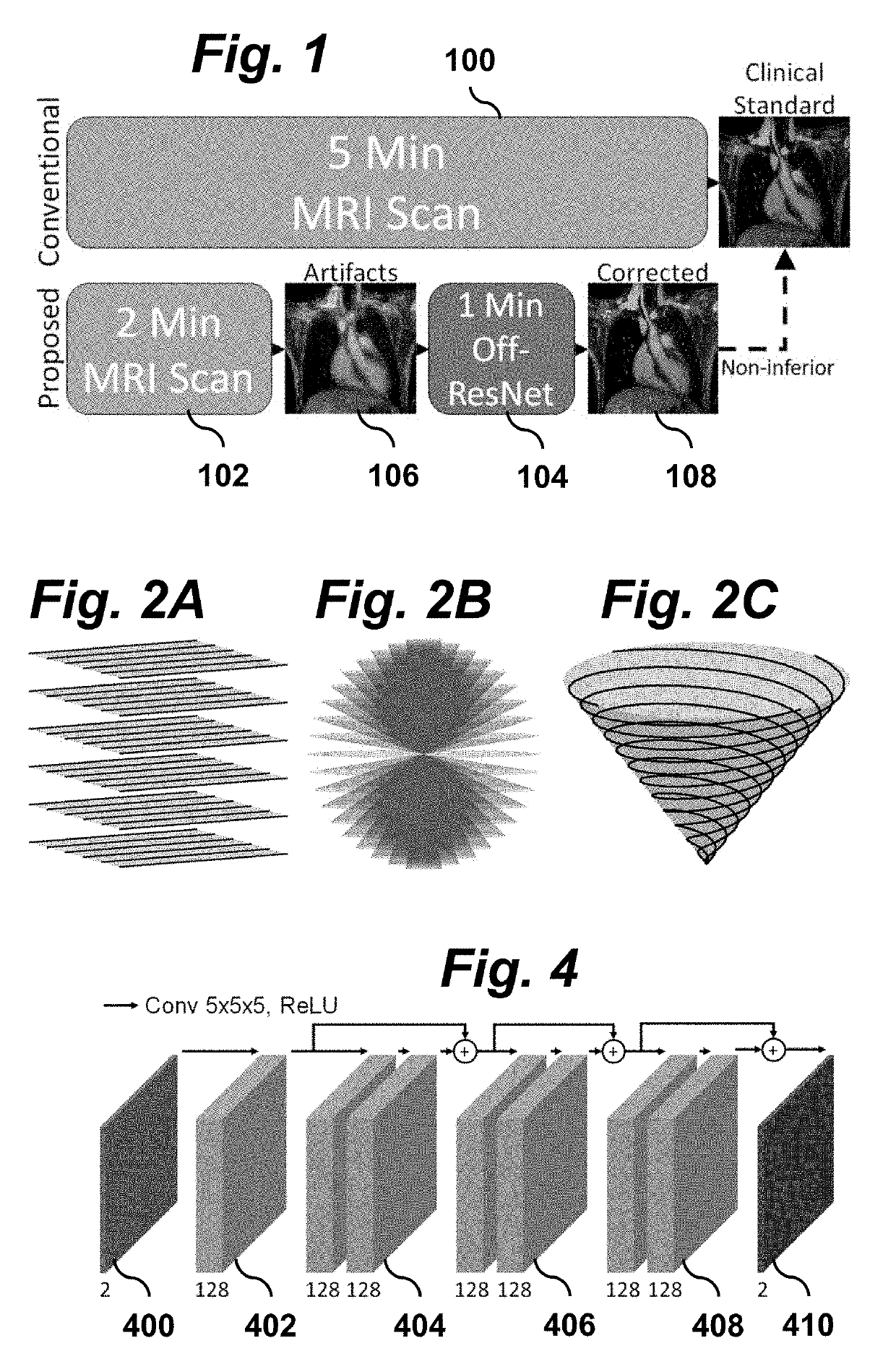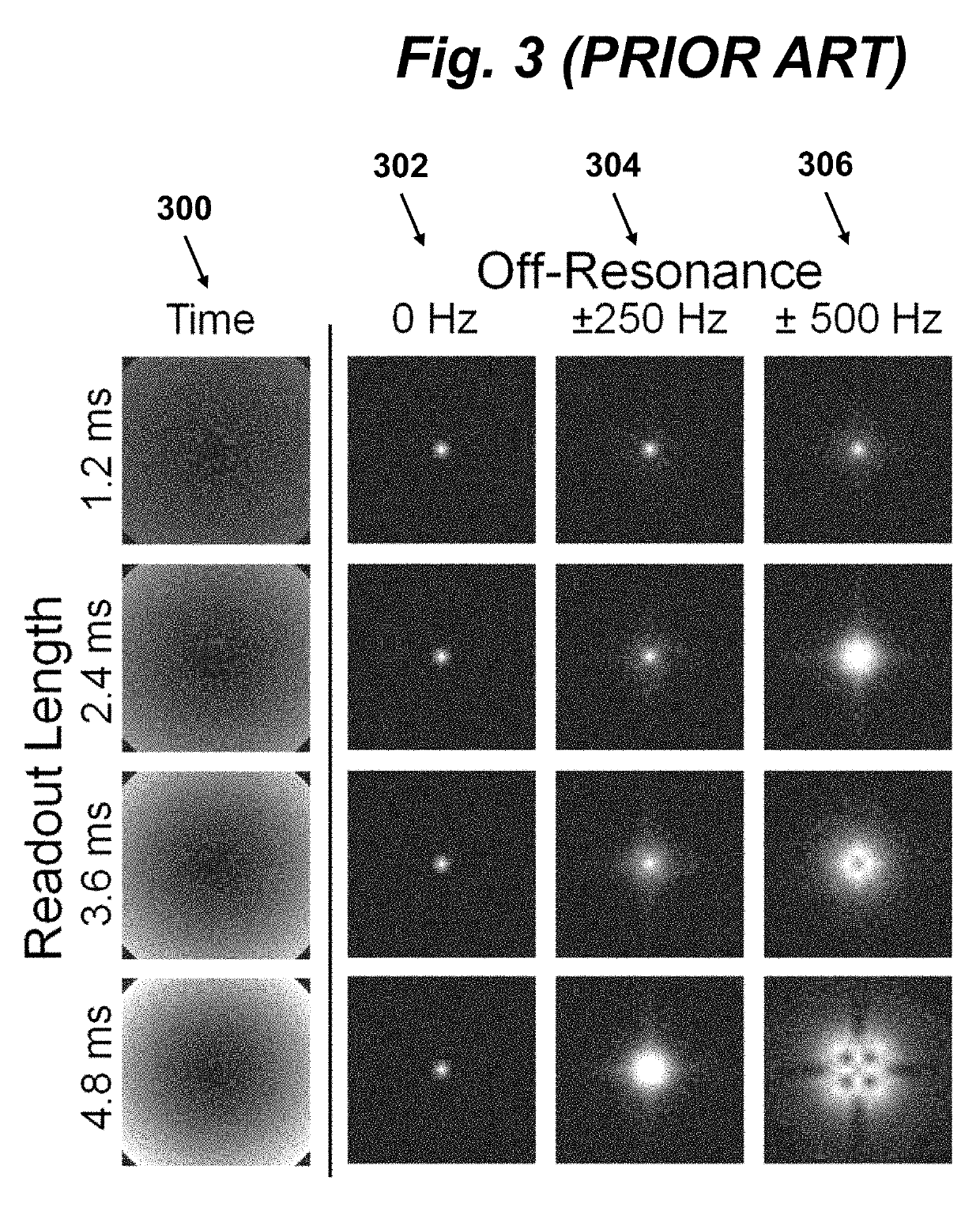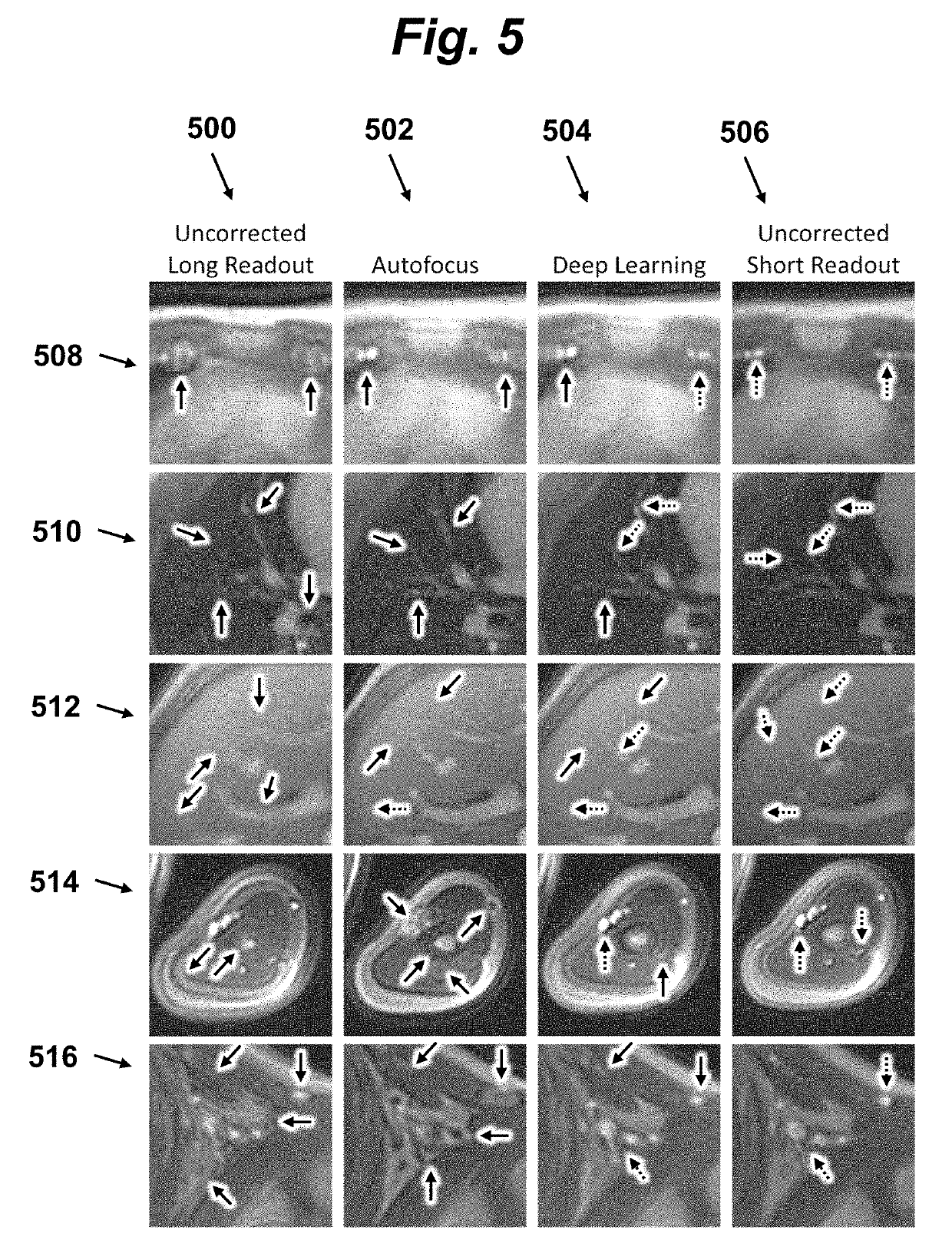Deep Learning Method for Nonstationary Image Artifact Correction
a technology of deep learning and nonstationary image, applied in the field of magnetic resonance imaging, can solve the problems of slow mri scan, several minutes to collect sufficient data, and ineffective scan-time efficiency of cartesian trajectories, so as to reduce scan time, reduce scan time, and sacrifice image quality
- Summary
- Abstract
- Description
- Claims
- Application Information
AI Technical Summary
Benefits of technology
Problems solved by technology
Method used
Image
Examples
Embodiment Construction
[0024]Embodiments of the invention provide a method for MRI that includes correcting non-stationary off-resonance artifacts to allow for faster and more efficient 3D scans while maintaining image quality. FIG. 1 contrasts a conventional 5 minute scan 100 with the scanning procedure of the present invention which includes a 2 minute efficient scan 102, producing an image with artifacts, followed by a 1 minute off-resonance artifact removal processing step 104 to produce a comparable quality image in about ⅗ the time as the conventional method.
[0025]The imaging acquisition scan 102 is performed by a magnetic resonance imaging (MRI) apparatus using non-Cartesian trajectories (e.g., FIG. 2B or 2C). For example, the MRI apparatus may be a 3T GE scanner with a 32-channel body coil. The non-Cartesian trajectories may be a ferumoxytol-enhanced, spoiled gradient-echo 3D cones trajectory with short readouts between 0.9-1.5 ms, intended for diagnostic reading. The MRI apparatus reconstructs a ...
PUM
 Login to View More
Login to View More Abstract
Description
Claims
Application Information
 Login to View More
Login to View More - Generate Ideas
- Intellectual Property
- Life Sciences
- Materials
- Tech Scout
- Unparalleled Data Quality
- Higher Quality Content
- 60% Fewer Hallucinations
Browse by: Latest US Patents, China's latest patents, Technical Efficacy Thesaurus, Application Domain, Technology Topic, Popular Technical Reports.
© 2025 PatSnap. All rights reserved.Legal|Privacy policy|Modern Slavery Act Transparency Statement|Sitemap|About US| Contact US: help@patsnap.com



